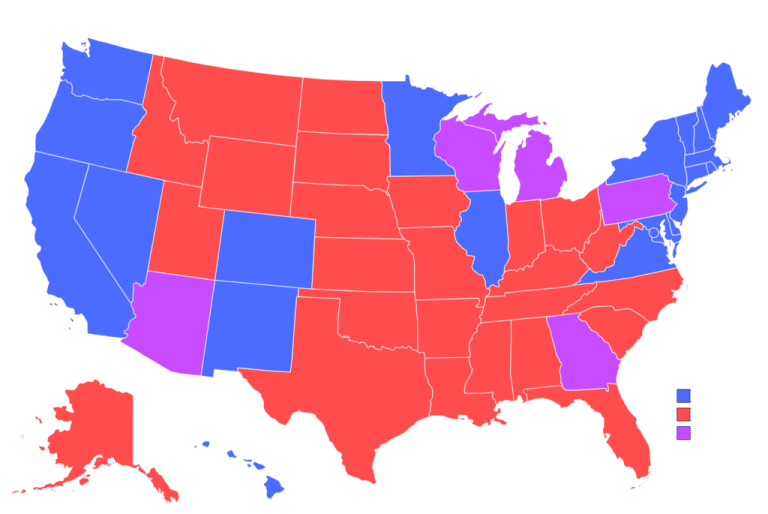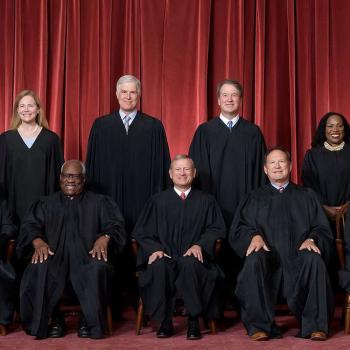The relationship between religion and politics is an important topic, but it’s far more complicated and nuanced than the media usually portrays.
Social scientist Ryan Burge observes that most attention to the issue of religion and politics has been directed to the “religious right.” But, his research shows that the most politically active religious demographic is atheists!
Atheists are the group most likely to contact a public official and to put up political signs. They come in second only to the Hindus, by 4 percentage points, in going to local political meetings. And an astounding half of atheists give money to candidates.
Overall, according to Burge, who pulls together various measures, “The average atheist is about 65% more politically engaged than the average American.”
White evangelicals are actually in the middle of the pack in the number of “political activities” they are involved in. Muslims and White Catholics are slightly ahead of them. Mainline Protestants are much more active, with Buddhists, agnostics, and Jews even more so. But atheists lead everybody.
That shouldn’t be surprising. Atheists’ only hope is in this world so they put their faith in politics. They don’t give to a church or to religiously-motivated good works, so they give to politicians.
In another study, Burge notes that while religious involvement on the whole is declining–which favors Democrats–this change is not happening at the same rate everywhere, and there are some states in which religious involvement is growing. He then worked out the political implications.
The biggest decline is not in the Pacific Northwest or New England, where one might expect, but in the industrial Midwest, in the “rust belt” states of Wisconsin, Michigan, and Pennsylvania. These have been “swing states” that could go to one party or the other. But if they are becoming more and more secular, Burge concludes that it is more likely that they will end up in the Democratic column.
On the other hand, in Texas and Florida–#2 and #3 in population after California, all of them having passed New York–religious involvement is increasing. Which would suggest, according to Burge, that the Democratic hopes to turn them blue will be in vain.
Why are those states becoming more religious? Because of the large number of Hispanic immigrants. Comments Burge,
Survey data indicates that recent immigrants to the United States report very high levels of religious attendance and prayer frequency, which predisposes this group to cultural conservatism.
Messages about the rights of transgender individuals and expanded abortion access do not resonate with these types of voters.
Hispanics were a reliable part of the Democratic base back when the party focused on “working class” economic issues, but not so much now that the party has shifted its focus to sex and gender.
Note too the irony. Most cultural conservatives tend to be leery of the upsurge in immigration–that is to say, illegal immigration–and yet the immigrants they decry tend to be cultural conservatives themselves. And they may be the ones who can help pull America back from the secularist abyss.
And yet, Burge himself thinks that religion overall is fading from politics. He comments, “I think that era of religion and politics is rapidly coming to a close. The Religious Right is no longer a primarily religious movement – it’s one about cultural conservativism and nearly blind support for the GOP with few trappings of any real religiosity behind it.”
I would argue that the decline of religion is also affecting conservatives, so that the “moral majority” version of the Christian Right will no longer have the influence that it did and that conservatism–even cultural conservatism–will become less concerned with moral issues.
Donald Trump would not have passed muster with the moral majority. That evangelicals tend to support him means that they themselves are not insisting on morality and spirituality in politics like they used to. The libertarian bros among the “bar stool conservatives” aren’t religious, and yet they are strong Trump supporters. So more generally is the working class, the most unchurched demographic. As I’ve blogged about, the most loyal members of Trump’s base are self-identifying evangelicals who don’t go to church.
These would probably show up as “unaffiliated” in Burge’s data base, which is drawn from church membership rolls. The displaced workers in the Rust Belt may have stopped going to church, but their unhappiness at their once high-paying jobs moving overseas, leaving behind boarded up factories and rusting machinery, is only made worse by the judgmental condescension of the progressive elites. They are not going to vote for woke Democrats. So I don’t think Republicans need to give up on Wisconsin and Michigan.
Ron DeSantis is shaping up to be the embodiment of “Trumpism without Trump.” He is definitely a cultural conservative–pro-life, anti-LGBTQ, and an in-your-face opponent of wokism in all of its forms. Evangelicals seem to like him. But, as has been noted, DeSantis, at least so far, is eschewing “God-talk” and not bothering to court religious leaders.
Just as there are different kinds of religion and different kinds of Christians, there are different kinds of “nones.” And just as America’s religious landscape is changing, America’s political landscape is changing. And it isn’t completely clear what those changes will mean.
Illustration: “Last 2 Elections: Red States, Blue States, & Purple States” by BobWyatt07, CC BY-SA 4.0 <https://creativecommons.org/licenses/by-sa/4.0>, via Wikimedia Commons












